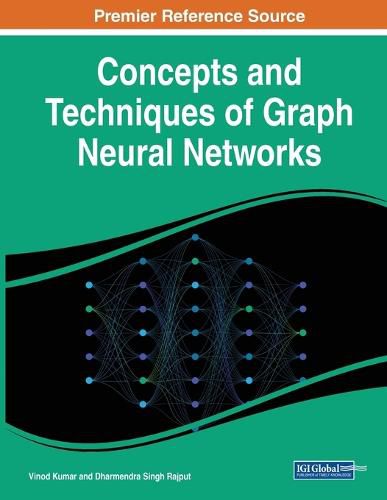Readings Newsletter
Become a Readings Member to make your shopping experience even easier.
Sign in or sign up for free!
You’re not far away from qualifying for FREE standard shipping within Australia
You’ve qualified for FREE standard shipping within Australia
The cart is loading…






This title is printed to order. This book may have been self-published. If so, we cannot guarantee the quality of the content. In the main most books will have gone through the editing process however some may not. We therefore suggest that you be aware of this before ordering this book. If in doubt check either the author or publisher’s details as we are unable to accept any returns unless they are faulty. Please contact us if you have any questions.
Recent advancements in graph neural networks have expanded their capacities and expressive power. Furthermore, practical applications have begun to emerge in a variety of fields including recommendation systems, fake news detection, traffic prediction, molecular structure in chemistry, antibacterial discovery physics simulations, and more. As a result, a boom of research at the juncture of graph theory and deep learning has revolutionized many areas of research. However, while graph neural networks have drawn a lot of attention, they still face many challenges when it comes to applying them to other domains, from a conceptual understanding of methodologies to scalability and interpretability in a real system.
Concepts and Techniques of Graph Neural Networks provides a stepwise discussion, an exhaustive literature review, detailed analysis and discussion, rigorous experimentation results, and application-oriented approaches that are demonstrated with respect to applications of graph neural networks. The book also develops the understanding of concepts and techniques of graph neural networks and establishes the familiarity of different real applications in various domains for graph neural networks. Covering key topics such as graph data, social networks, deep learning, and graph clustering, this premier reference source is ideal for industry professionals, researchers, scholars, academicians, practitioners, instructors, and students.
$9.00 standard shipping within Australia
FREE standard shipping within Australia for orders over $100.00
Express & International shipping calculated at checkout
This title is printed to order. This book may have been self-published. If so, we cannot guarantee the quality of the content. In the main most books will have gone through the editing process however some may not. We therefore suggest that you be aware of this before ordering this book. If in doubt check either the author or publisher’s details as we are unable to accept any returns unless they are faulty. Please contact us if you have any questions.
Recent advancements in graph neural networks have expanded their capacities and expressive power. Furthermore, practical applications have begun to emerge in a variety of fields including recommendation systems, fake news detection, traffic prediction, molecular structure in chemistry, antibacterial discovery physics simulations, and more. As a result, a boom of research at the juncture of graph theory and deep learning has revolutionized many areas of research. However, while graph neural networks have drawn a lot of attention, they still face many challenges when it comes to applying them to other domains, from a conceptual understanding of methodologies to scalability and interpretability in a real system.
Concepts and Techniques of Graph Neural Networks provides a stepwise discussion, an exhaustive literature review, detailed analysis and discussion, rigorous experimentation results, and application-oriented approaches that are demonstrated with respect to applications of graph neural networks. The book also develops the understanding of concepts and techniques of graph neural networks and establishes the familiarity of different real applications in various domains for graph neural networks. Covering key topics such as graph data, social networks, deep learning, and graph clustering, this premier reference source is ideal for industry professionals, researchers, scholars, academicians, practitioners, instructors, and students.